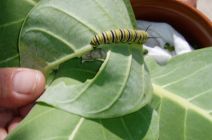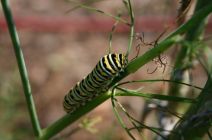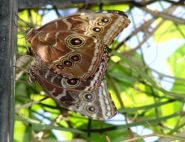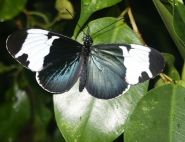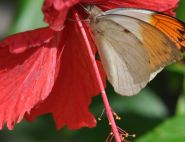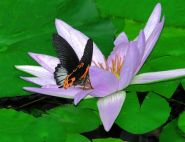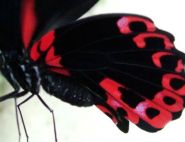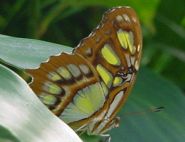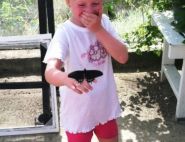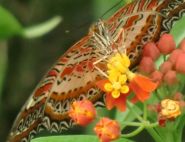Carterpillar Care
Where to keep your caterpillars?
We use small plastic aquariums to grow our caterpillars in but a one-gallon jar is also suitable. The top of your container should be covered by a piece of cheesecloth ( we use kitchen roll which works too) and fastened securely by a rubber band. You should also provide your caterpillars with some sticks that fit securely into the cage for them to pupate on. Do not use a jar lid with holes punched in it. Not only will this provide inadequate ventilation, but the caterpillars can also be cut open by the sharp edges of the holes. Keep your container with caterpillars in a light, airy space, but not direct sunlight.
How to feed your caterpillars?
The most difficult part in raising butterflies is to provide your caterpillars with fresh cuttings from the host plant appropriate for the species of caterpillar you are raising. Caterpillars are very picky eaters. Each species will only eat very specific plants. Therefore, in order to take care of a caterpillar, it is important to know what kind of caterpillar it is, and what that kind of food it eats. A good rule of thumb is that a caterpillar is most likely to eat the kind of plant you found it on. If you are in doubt about what kind of caterpillar you have found, it is best to let it go. Caterpillars will starve to death before they will eat the wrong food. Once you have found the correct food, remember your caterpillars must always have fresh food! Caterpillars will not eat old or dry leaves. The easiest way to feed your caterpillars is to provide them with a live, potted plant in their cage. However, because many host plants are large bushes or trees, this is not always possible. Therefore, it is best to provide new cuttings of host plant everyday. We use small plastic cups filled with vermiculite and water to hold the cuttings and stop the caterpillars falling into the water. If you cut too much food at once, give some of it to your caterpillar and put the rest in a glass of water in refrigerator until you are ready to use it. This will keep the food fresh longer. Always carefully inspect your fresh plant cuttings for spiders or insects. It is very disappointing to find that you have inadvertently fed your caterpillars to a very fat and happy spider! Caterpillars receive all the water they need from the plants they eat so you don't have to provide any additional water.
How to keep your caterpillars clean?
Caterpillars have one job in life: eating. Because of this, they produce copious amounts of waste (known as frass). This frass must be cleaned out of the cage every day in order to prevent mold growth and create a healthy environment for your caterpillars. We line the bottom of our cages with paper towels, this makes the necessary daily cleanings easier.
How to handle your caterpillars?
Caterpillars are very susceptible to a variety of bacterial infections, including bacteria we all carry on our hands without knowing it. Be sure to always wash your hands thoroughly before handling the caterpillars. Caterpillars are relatively fragile creatures. Handle them very gently. If you are changing their host plant, it is best to put the fresh host plant into the cage, then wait a few hours for the caterpillars to crawl onto the new host plant on their own. Then you can remove the old food. Alternatively you can use a small paint brush to carefully move the caterpillars from one plant to another, this works for us. Remember how many caterpillars you have and count them all before you throw out old host plant so you do not accidentally throw away your caterpillars, it happens to the best of us! Do not pick up caterpillars with branching spines! These spines can deliver a very painful sting. If your caterpillars seem lethargic or have changed color, do not handle them. They are probably preparing to molt or form their pupa and are very vulnerable at this stage. Or they may be sick. If your caterpillars die, remove them from the cage immediately to help prevent infection of the other caterpillars in the cage.



